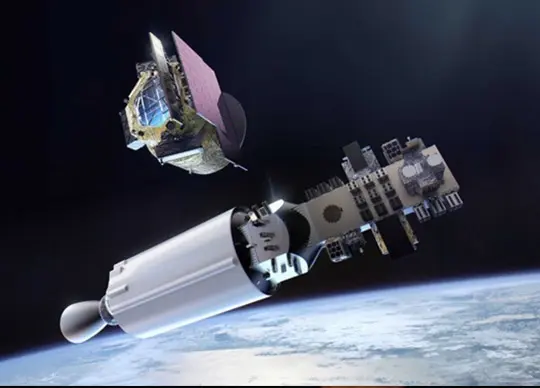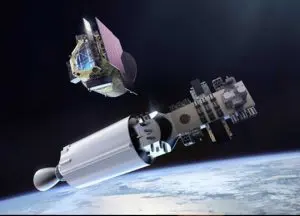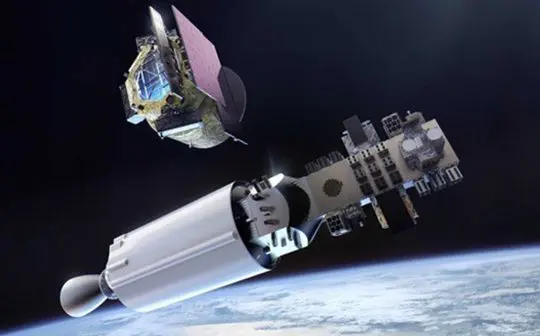

Image: Render of Optimus separating from SpaceX’s Falcon 9.
Space Machines Company has announced the launch of Optimus.
The foundation of Space Machines Company’s future satellite servicing infrastructure departed at 9:05 AM AEDT on the 5th of March from Vandenberg Space Force Base in California aboard SpaceX’s Falcon 9 rocket during the Transporter-10 mission.
Following its successful liftoff, Optimus will prioritise reaching its orbital slot where it will then commence its full testing campaign.
Weighing 270 kilograms, the launch of Optimus marks a major milestone for Australia’s sovereign space capabilities. It reinforces Space Machines Company’s commitment to developing innovative solutions that change how satellites are launched and operated on local soil.
As the first Australian commercial satellite capable of providing existing space infrastructure and satellites with life-extension services, inspections and assistance on-orbit, Optimus heralds the beginning of a new era in space sustainability.
Rajat Kulshrestha, Space Machines Company CEO said, “The successful launch of Optimus opens up new possibilities for how satellites are launched and operated. We believe it will transform the economics of space infrastructure. As the foundational asset in our architecture of servicing vehicles designed to repair, refuel, upgrade and relocate other satellites, Optimus enables us to provide services to extend satellite lifetimes, reduce space debris and sustainably scale space activities.”
With intentions to grow its fleet of Orbital Servicing Vehicles, Space Machines Company is actively exploring opportunities with local and international partners to integrate and demonstrate new servicing capabilities.
“We are thrilled that our vision of robotic satellites sustaining our space infrastructure is one step closer to becoming a reality,” Kulshrestha said. “And this is just the beginning.”
Xavier Orr, CEO and Co-Founder of Advanced Navigation, said: “We’re honoured to join Space Machines Company on its journey to support the sustainable development of the space economy. Optimus will demonstrate Boreas X90’s highly precise navigation capabilities as it manoeuvres the OSV efficiently within and between orbits, saving on fuel and time, and optimising mission success.”
Daniel Faber, Founder and CEO of Orbit Fab, said: “Orbit Fab is thrilled to equip the Optimus orbital servicing vehicle with our fiducial markers, which are providing critical in-space orientation data to support Space Machines Company with safe, sustainable space operations during its first OSV mission. This important mission and this collaborative partnership between Orbit Fab and SMC mark an important step toward cooperative refuelling in space.”
Dr Anthony Chesman, Renewable Energy Systems Group Leader at CSIRO, said: “CSIRO is focused on developing sovereign capability for not just existing technologies, but also the next generation of high-tech industries. It is a pleasure to work with SMC to launch our Australian-made flexible solar cells into orbit for testing.”
Will Crowe, Co-Founder and CEO of HEO, said: “This launch is a huge win for the Australian space ecosystem. This will be the first Australian spacecraft to which we will have been able to add our already qualified camera, which is a game changer for Australian government customers to get access to. We hope it’s just the first of many!”
Professor Andrew Parfitt, UTS Vice-Chancellor & President, said: “Our collaboration with Space Machines Company marks a significant milestone in our mission to foster innovation and drive transformative change in the Australian space industry. By combining academic expertise with industry vision, we have created a dynamic partnership that is pushing the boundaries of space technology. This collaboration exemplifies our commitment to creating meaningful opportunities for our students, researchers, and industry partners to thrive in the rapidly evolving space sector. Together, we are shaping the future of space exploration and laying the foundation for a vibrant and sustainable space ecosystem in Australia.”





